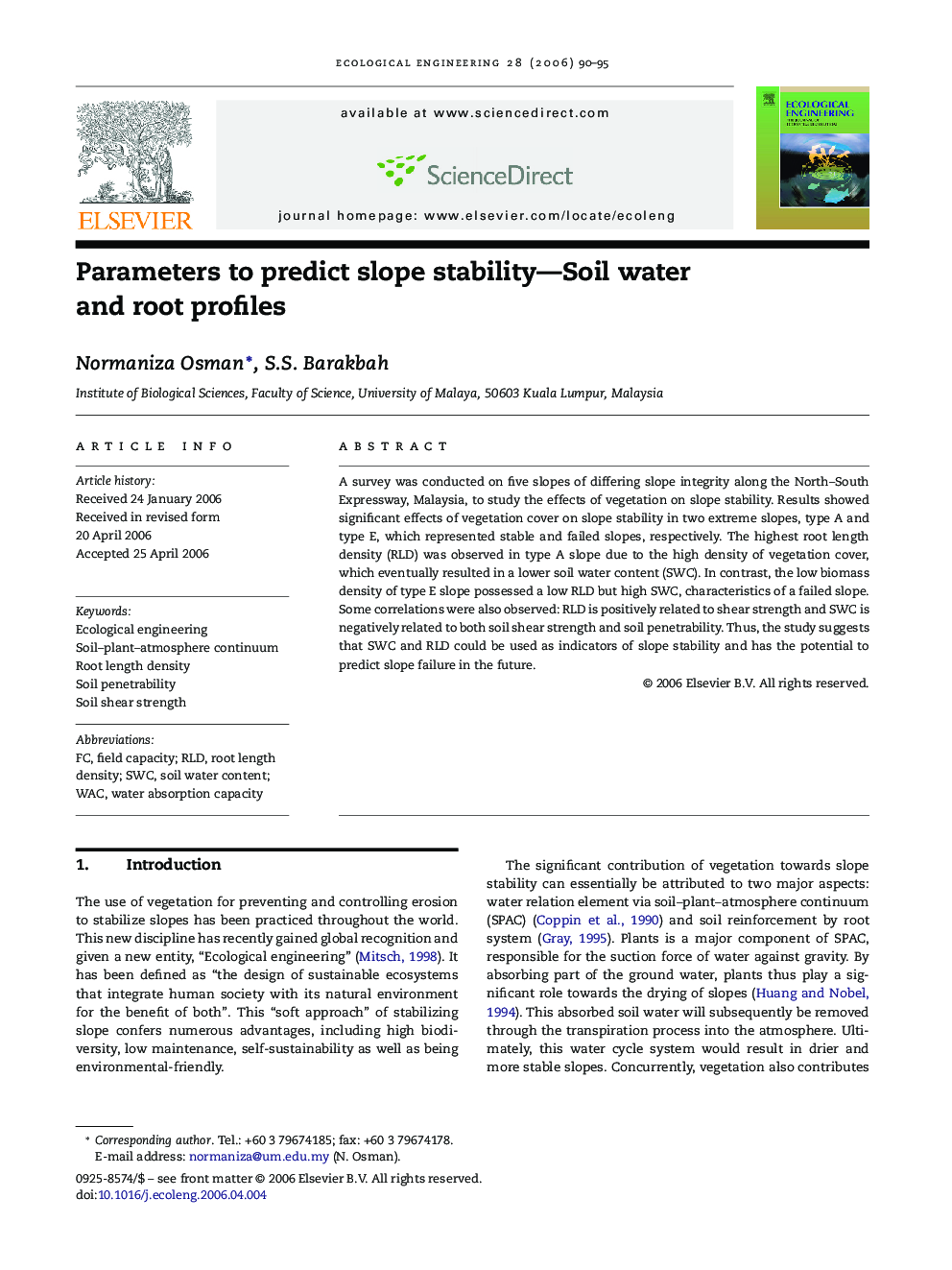| Article ID | Journal | Published Year | Pages | File Type |
|---|---|---|---|---|
| 4391256 | Ecological Engineering | 2006 | 6 Pages |
A survey was conducted on five slopes of differing slope integrity along the North–South Expressway, Malaysia, to study the effects of vegetation on slope stability. Results showed significant effects of vegetation cover on slope stability in two extreme slopes, type A and type E, which represented stable and failed slopes, respectively. The highest root length density (RLD) was observed in type A slope due to the high density of vegetation cover, which eventually resulted in a lower soil water content (SWC). In contrast, the low biomass density of type E slope possessed a low RLD but high SWC, characteristics of a failed slope. Some correlations were also observed: RLD is positively related to shear strength and SWC is negatively related to both soil shear strength and soil penetrability. Thus, the study suggests that SWC and RLD could be used as indicators of slope stability and has the potential to predict slope failure in the future.
